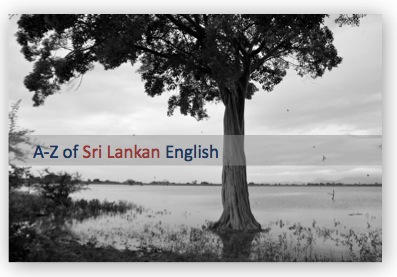An adhi poya is an extra poya day inserted into the Buddhist lunar calendar to ensure that it stays in sync with the western (solar) calendar. In December 2009 there were two poya days, Unduvap on the 1st and Duruthu on the 31st (much to the dismay of New Year’s Eve revellers, who weren’t officially allowed to drink alcohol until the strike of midnight!). This meant that Duruthu poya fell in December instead of January, Navam in January instead of February, and so on until Adhi Vesak on April 28th. The extra poya day means that Vesak itself will be celebrated (as always) in May.
The following explanation appeared in The Island on April 28th (Adhi Vesak day) under the heading “The significance of Adhi Vesak Full Moon Poya Day” by Premasara Epasinghe:
Although the recognised Vesak Full Moon Poya Day falls on Thursday 27 May 2010, there is an additional Vesak Poya called “Adhi Vesak Full Moon Poya Day” on Wednesday 28 April 2010. This Adhi Poya occurs once in 3 years, due to the change of planentary movements. There are 365 days in an year. According to astrology and Nekath, they calculate a year usually as 360 days. The planets namely Iru, Chandra, Angaharu, Buda, Brahaspathi, Sikuru, Senasuru, Rahu and Khetu, rotate round the Sun. Sometimes the course of the planetary movements change. According to astrological calculations, this leads to an additional month. That’s the reason, according to this year’s Sinhala calendar, Adhi Vesak Full Moon Poya dawns, in April 2010.”
This is of course nonsense. The fact that there are occasionally two poya days in one calendar month has absolutely nothing to do with the planets – and anyway, it’s news to me that “sometimes the course of the planetary movements change”! It is simply because the lunar month, which is approximately 29.5 days (the time it takes the moon to orbit the Earth), does not correspond with the solar year of approximately 365.25 days (the time it takes the Earth to orbit the sun). 365.25 / 29.5 = roughly 12.38. So while most years will include 12 poya days – one per calendar month – once every three years or so there will be a 13th. The last time this happened was in 2007, when May 31st was designated Adhi Poson poya day.
The Muslim lunar calendar, which is also used in Sri Lanka to determine the dates of Muslim holidays such as Ramazan and Hadji, does not have a system like this to keep it in line with the solar year. Which is why Muslim holidays “slip” by a few days every year – Id-Ul-Fitr (Ramazan festival day) fell on 21st September 2009, but will be on 10th September 2010.
###
A-Z of Sri Lankan English is an all-new, occasional alphabetical dip into the variety of English spoken in Sri Lanka, published exclusively on Groundviews. The original A-Z of Sri Lankan English was published in the travelsrilanka magazine, and can be found here.

